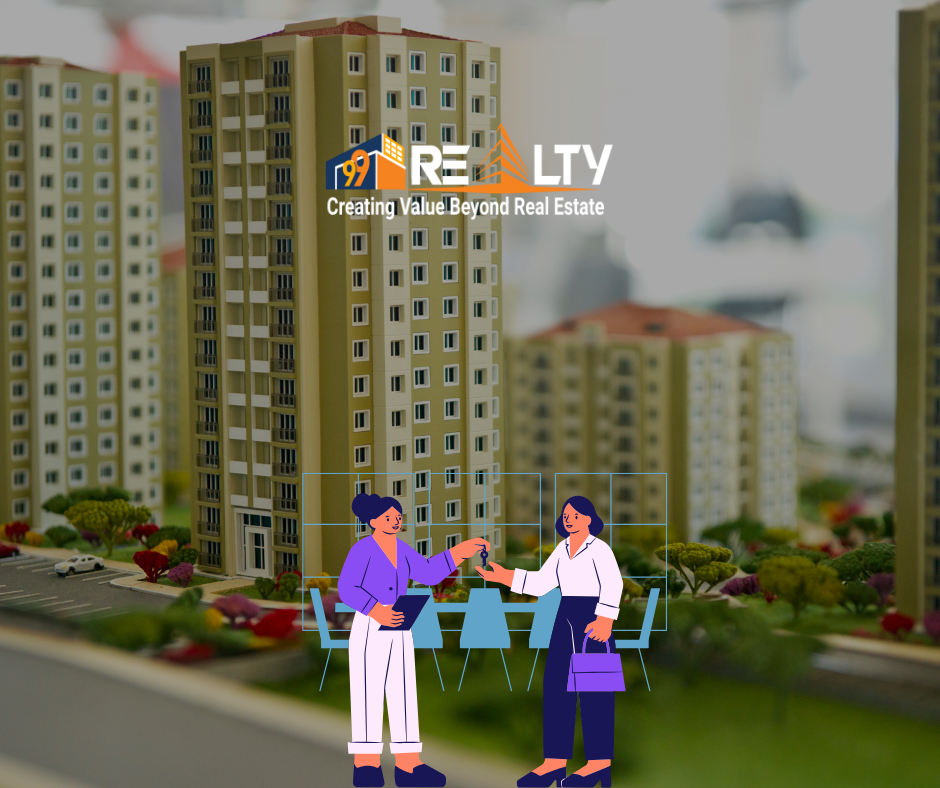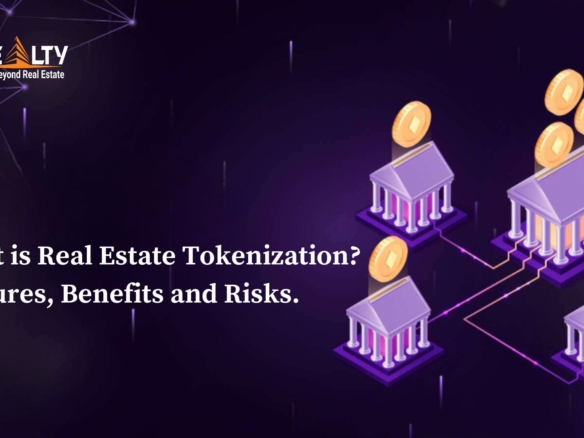Close your eyes and picture a real estate construction site. Chances are, most of the faces that come to mind are male—engineers, builders, decision-makers. But here’s a twist: women are stepping in, and they’re not just observing from the sidelines—they’re changing the game. Although they make up only about 11–12% of the real estate workforce in India, a transformation is underway, powered by initiatives like NAREDCO-Mahi.
So, what does the landscape really look like? What hurdles are women facing, and more importantly, how are they overcoming them? Let’s dig in.
The Transformation of Kolkata’s Real Estate Landscape
Current Landscape of Women in Real Estate
Workforce Numbers That Matter
According to recent data from NAREDCO (National Real Estate Development Council), only around 11–12% of the Indian real estate workforce is female. That’s shockingly low—especially when you consider that this sector is poised to become a $1 trillion powerhouse by 2030.
In a world where construction and urban planning directly affect how people live, commute, and interact, this gender imbalance isn’t just unfair—it’s inefficient.
Floor Space Index (FSI): Meaning, Calculation & Importance in Urban Real Estate
Where Are Women Represented?
Women are carving out spaces in specific areas of the industry. Here’s a breakdown:
- Architecture: Around 20% of architects are women.
- Legal, Marketing, Interiors, ESG: In Tier-I cities, women hold about 35–40% of roles here.
- Advisory Firms: Only about 15% are women-led in major metros.
- PropTech & Startups: This area is seeing increased female participation due to its flexible and digital nature.
So yes, the presence is growing—but there’s still a long road ahead.
Meet NAREDCO-Mahi: Pioneers of Change
The Backstory
Launched under the umbrella of the Ministry of Housing and Urban Affairs, NAREDCO-Mahi is a women’s wing of the National Real Estate Development Council. Their mission? To bridge the gender gap, empower women with skillsets, and offer a platform for female leadership in this traditionally male-dominated field.
Think of it as the “Shakti” force of the real estate world—building more than homes, building equity.
The Game Plan
So how are they doing it? Through a multi-layered approach:
Skilling and Certification Programs
From technical training to digital certifications in construction management and real estate finance, Mahi is preparing women to be on-site and on-point.
Outreach Beyond Metros
Mahi has been driving active outreach in Tier-II and Tier-III cities—areas where access, opportunity, and exposure are limited. More women are now entering legal, client-facing, and mid-management roles in these towns.
Why Tier 2 and Tier 3 Cities Are the New Investment Frontiers
New Insights & Key Highlights from NAREDCO-Mahi
1. Structured Leadership & Governance
NAREDCO-Mahi now has a clearly defined leadership team covering all regions of India:
- Dr. Ananta S. Raghuvanshi (Chairperson) and Ms. Smita Patil (President) continue to lead.
- Region-wise Vice Presidents and Assistant VPs span North, South, East, and West — reinforcing decentralized leadership and regional representation.
What this means: A more structured leadership model paves the way for stronger advocacy and grassroots impact across India—not just metro-centric efforts.
2. Ambitious, Thematic Conventions
Themed conventions reflect evolving focus areas:
- 3rd Convention (June 2024, Delhi): Theme “Sustain Her” – focused on gender integration and sustainability in real estate.
- 4th Convention (planned June 2025): Broader agenda featuring core initiatives:
- Nirmal Jal Prayas (water conservation)
- Shashwat Nirman (sustainability & green building)
- Skilling programs
- Dolphin Tank (a PropTech accelerator)
What this means: The scope has expanded from professional equity to environmental & technological transformation—positioning women as leaders in key global themes.
3. Focused Impact Initiatives
From the brochure and PDFs, several flagship projects stand out:
- Nirmal Jal Prayas: Drives water-saving campaigns and supports sustainable water resource renewal
- Shashwat Nirman: Promotes energy-efficient, green construction practices in alignment with national environmental goals.
- Dolphin Tank: A dedicated incubator/accelerator for women-led PropTech startups, offering mentorship, funding, and demo support.
- NIPUN Skilling & Training: Sourced through government collaboration, offering targeted courses in building, project management, marketing, finance, and compliance.
What this means: Mahi is delivering tangible value—not just networking:
They’re supporting resource conservation, empowering women entrepreneurs, and uplifting technical standards.
PropTech Acceleration: The “Dolphin Tank”
In a digital-first future, NAREDCO-Mahi isn’t holding back. The Dolphin Tank initiative functions like Shark Tank—but for women-led PropTech startups. It offers mentorship, pitch platforms, networking, and seed funding support.
Women as Owners and Developers: The Next Big Leap
While much of the focus has been on employment and representation, ownership is where true empowerment lies.
At present, women constitute less than 10% of independent property developers and large-scale landowners in India. The barriers? Access to capital, inherited family bias favoring male successors, and lack of mentorship in investment and entrepreneurship.
But winds are shifting.
- Government schemes like PMAY encourage female ownership in housing titles.
- A rise in women-led PropTech startups is signaling a new class of property-savvy entrepreneurs.
- Platforms like NAREDCO-Mahi are actively mentoring women to become not just employees—but developers, investors, and firm owners.
Ownership isn’t just about money—it’s about decision-making power. And that’s the next frontier Indian real estate must conquer.
Why Women Matter in Real Estate
Empathy in Design, Humanity in Construction
It’s not just about numbers—it’s about perspective. Women often bring a people-first mindset. They prioritize functionality, safety, and sustainability—things that don’t always rank high in typical construction priorities but make or break user experience.
Business Growth & Innovation
Numerous studies show that gender-diverse teams outperform homogenous ones. In real estate, companies with women in leadership have shown higher project completion rates, stronger client trust, and more human-centric design.
If you want cities that work for everyone—women, children, the elderly—you need women at the table.
Challenges on the Road
Gender Bias & Stereotypes
One major roadblock is the age-old perception that construction is “man’s work.” Women engineers and site managers often find themselves questioned, second-guessed, or even ignored.
The Leadership Gap
Did you know? Only 2% of executive roles in construction firms are held by women. That’s not a glass ceiling—that’s a concrete one.
The Wage Divide
On average, women in real estate earn 15–20% less than their male counterparts in similar roles. Combine that with fewer promotions and limited mentoring, and it’s a tough climb.
Success Stories & Signs of Progress
Architects Leading the Way
Women like Brinda Somaya and Sheila Sri Prakash have redefined what Indian architecture looks like—with green design, heritage conservation, and community housing.
Across metros, more young women are joining architecture and urban planning, bringing fresh energy to the sector.
Women-led Startups & PropTech Innovations
Thanks to digital transformation, women are also entering the space through PropTech startups—building apps for home listings, smart construction tools, and even AR-based real estate walkthroughs.
How to Accelerate Inclusion
Let’s be real. We don’t need token gestures. We need action. Here’s how:
Mentorship & Sponsorship Programs
You can’t be what you can’t see. That’s why mentorship matters. NAREDCO-Mahi is launching regular networking events, mentorship circles, and “Mahi Talks” to spotlight role models and foster community.
Flexible Work Policies
Work-from-home, hybrid setups, on-site safety protocols, and maternity benefits must become the norm—not the exception. This is especially critical for retaining women in post-marriage or motherhood stages.
Policy and On-Ground Safety
Proper sanitation facilities on construction sites, dedicated rest areas, safe transportation—these aren’t luxury add-ons. They are essentials.
A Vision for 2047: Inclusive, Equal, Empowered
India’s real estate sector is expected to hit $1 trillion by 2030. But here’s the question: who’s building this future?
With India’s Viksit Bharat @2047 vision in full swing, real estate must not only scale up economically—but evolve socially. An inclusive sector, where women co-lead in every role—from CEO to carpenter—isn’t just ideal, it’s imperative.
| Trailblazers: Inspiring Women in Indian Real Estate |
|---|
| Profiles of Pioneering Women Leaders These women aren’t exceptions—they’re proof of potential: |
| – Rajni Sinha (DLF): Rose from intern to Chief Town Planner, designing 12 million sq. ft. |
| – Sangeeta Prasad (Mahindra Lifespaces): Turned sustainability from buzzword to profit center |
| – Anita Arjundas (Tata Realty): First woman to head a major developer’s residential division |
Conclusion
Real estate is more than cement and bricks—it’s the soul of a city. It defines how people live, work, and grow. Right now, women are underrepresented in shaping this soul. But thanks to movements like NAREDCO-Mahi, tides are turning.
The future of Indian cities must be gender-inclusive, not as a checkbox, but as a blueprint. Because when women rise, so does the nation.
FAQs
1. What is NAREDCO-Mahi and why is it important?
NAREDCO-Mahi is the women’s wing of the National Real Estate Development Council. It aims to empower women through training, leadership development, and representation in real estate.
2. What are some roles women take up in real estate?
Women are working as architects, legal advisors, marketers, project managers, finance specialists, and PropTech entrepreneurs.
3. What are the main challenges women face in this sector?
Major hurdles include gender bias, low leadership representation, pay gaps, and lack of safety or facilities on construction sites.
4. How is the gender gap being addressed?
Initiatives like skill-based training, outreach in smaller towns, mentorship programs, and flexible work policies are helping bridge the gap.
5. How can more women join the real estate sector?
By encouraging STEM education, supporting inclusive policies, improving workplace safety, and promoting success stories that inspire young girls.
Need Help?
Need help evaluating a property or planning your next move in the market?
Reach out to 99 REALTY – your trusted real estate partner for smarter choices.
Subscribe to get updates on our latest posts and market trends.






Join The Discussion